When it comes to starting seeds inside, success is all about being prepared, and keeping it simple!
Contrary to what many think, growing flowers and vegetables from seed is not difficult. Nor does it require special lights or fancy equipment.
In fact, the biggest key of all is to be prepared, And that means getting ready during the early winter months, and not waiting until the last minute.
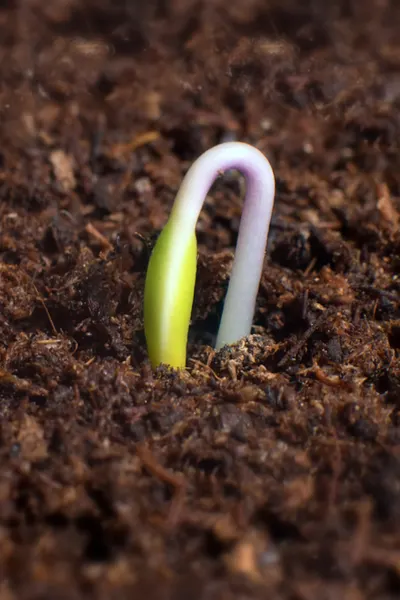
One thing is for sure. Not only can starting seeds indoors be fun, it can also save big on the budget!
How To Start Seeds Inside With Ease!
If you are looking to start seeds indoors, here are our top tips for success:
Prepare Early
What ever you do, be prepared! Don’t wait to order seeds and supplies. Ordering early insures you have the best chance of selection, and, are ready when it comes time to plant.
Use Fresh, Quality Seeds
One of the biggest mistakes gardeners make when starting seeds inside is using stale seeds. Fresh seeds not only germinate at a higher rate, they perform better when it comes to early growth.
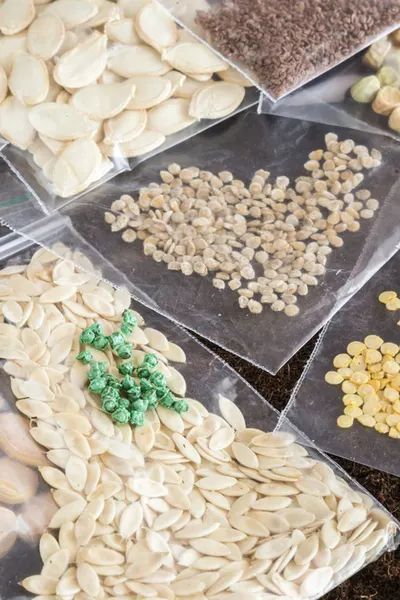
Always check seed packets for the packing dates. Seeds should be no older than a year to ensure best results.
And if you happen to be saving seeds from the previous growing season, be sure to always store in dry, cool & dark space. Refrigerators are an excellent choice to keep stored seeds viable.
Use A High Quality Soil Mix
Starting seeds is not the time for using ordinary soil from the garden. Or every day potting soil. Always select high quality, loose, fertile, and well-draining soil mixes. (See: Espoma Organic Seed Starting Mix)
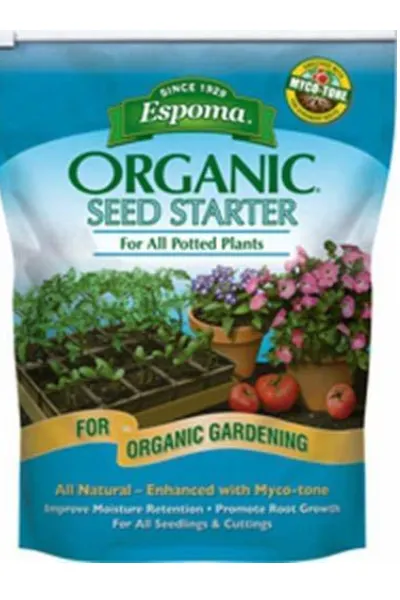
For those that want to save even more, you can also mix your own. A simple seed starting soil made of equal parts of sand, potting soil, and vermiculite works well.
To make even better, add in an equal part of worm castings or pulverized compost to the mix. It will help give seedlings an outstanding slow-release organic fertilizer for early growth.
Start Seeds Inside At The Right Time
One of the most important steps off all is to start your seeds indoors at the right time.
Plant too early, and they become large and unmanageable before its time to move to the garden. But plant them too late, and they may never mature enough to handle the shock of transplanting.
To start seeds indoors at the correct time, use a simple method to count backwards from your safe planting date.
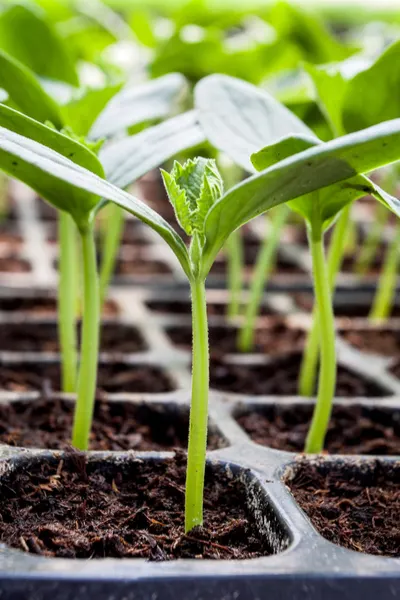
A safe planting date is known as your areas last frost date. This refers to the last typical day each spring when the threat of a frost could occur in your area.
Next, check the recommended growing time on the back of each seed packet. Then, simply count backwards from your last frost date to know when to start your seeds. (See : Picking The Right Time To Start Seeds Inside)
Planting Right
When starting seeds inside, always plant two seeds in each cell. Planting two helps to ensure all seed cells are filled with seedlings. If both sprout, thin to one after a few days by choosing the strongest of the two.
Once planted, lightly water, or mist with a spray bottle to dampen the soil.
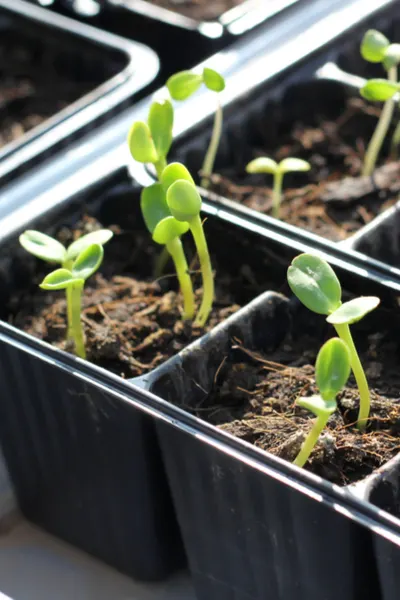
Cover trays with a plastic top or saran wrap to help hold in moisture until the first plants sprout.
Vegetable seeds do not require light to germinate. In fact, the only thing light will do is dry out the soil quicker.
Place seed trays in a dark warm place until they begin to germinate. Check on the seeds every few days. Water or mist when necessary to keep the soil slightly damp.
Proper Lighting
Once the first few seeds sprout, it is time for light.
As much as a sunny windowsill sounds like a perfect place to start seeds inside, it’s not.
The ever-changing angles and distance of sun’s light source make it hard for seedlings to grow well.
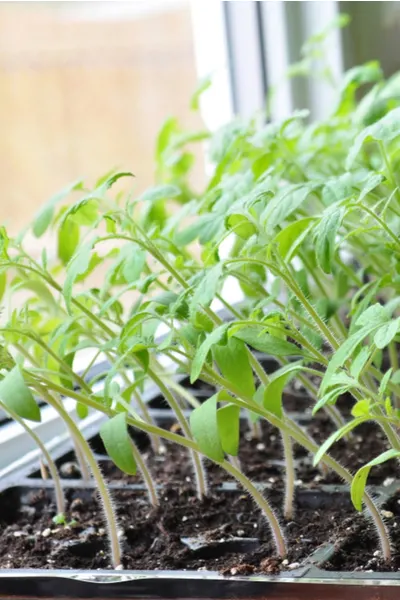
Even with constant turning, plants are often leggy and weak when grown in window light.
But don’t rush out to buy those ultra expensive grow lights. Standard, inexpensive T8 or T25 fluorescent shop lights work perfectly fine.
With shop lights, simply place the lights about an inch and a half above the tops of the plants develop strong, slow-growing plants. Move the lights up as they grow to keep the 1-1/2″ distance
Watering
Once seeds germinate, their water needs will continue to grow each week. And making sure they get the right kind of watering is extremely important.
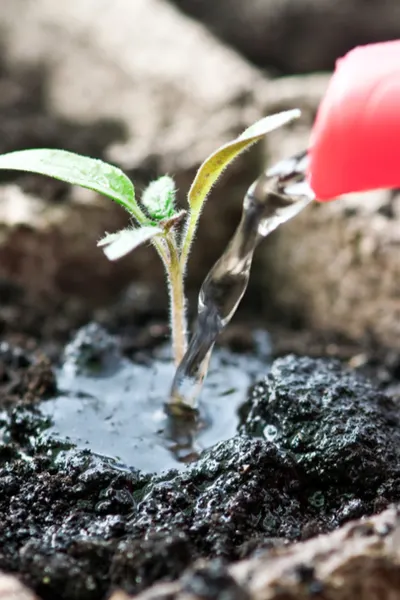
Check the soil with the touch of your fingertip every day. If it is dry to the touch, lightly water again. Soil should be damp, but not soggy. If the soil is too wet, it can easily rot seeds and drown seedlings.
So get those supplies prepared, and get ready to start your seeds inside this year!
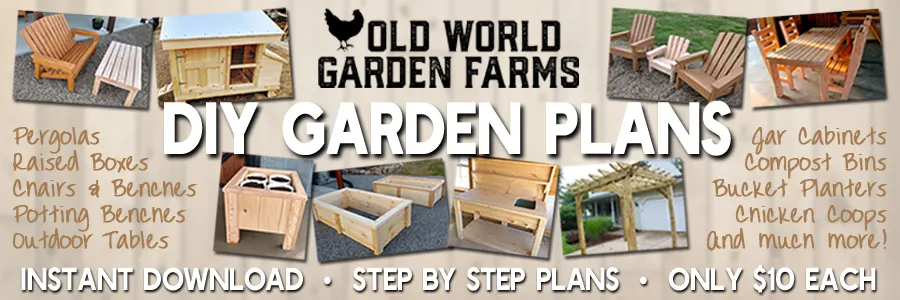
This Is My Garden is a website dedicated to spreading the love and knowledge of gardening around the world. We publish two new garden articles each week. This article may contain affiliate links.
